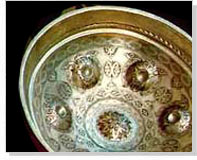 Wrought copper is obtained after being subjected to various mechanical processes including rolling, extruding and forging etc. It also means that the solid metal was processed into its final shape -including sheets, plates, bars, tubing, angles, channels, etc.
Wrought copper is obtained after being subjected to various mechanical processes including rolling, extruding and forging etc. It also means that the solid metal was processed into its final shape -including sheets, plates, bars, tubing, angles, channels, etc.
Selecting copper alloys involves clearly analyzing materials grades and specifications. Compositional standards have been defined by The Copper Development Association (CDA) that adhere to the Unified Numbering System (UNS) for the various copper alloys. The system was established in conjunction with the Society of Automotive Engineers (SAE), the American Society for Testing and Materials (ASTM), and various other international metal trade associations.
There are various other organizations that define specifications for copper cast and wrought alloys including the Alloy Casting Institute (ACI), the Investment Casting Institute ICI), and the American Die Casting Institute (ADCI).
Copper alloy materials, which are manufactured in accordance with U.S. military specifications (MIL-SPEC) receive a QQ or QQS designation. Copper alloys that are suitable for aerospace applications meet criteria in the SAE's aerospace material specification (AMS).
Applications of Wrought CopperWrought copper is used in different fields and areas for making different parts and components. Some of the areas where the metal alloy is used are:
- Food processing
- Energy and gas transport
- Welding equipment
- Thermal processing equipment
- Electronics
- Telecommunications
